13 Types of Schlumbergera Cacti (With Pictures)
Have you ever heard of the Holiday cactus? It has many names like Christmas cactus, Easter cactus, Thanksgiving cactus, zygocactus or even Crab cactus, but its real name is Schlumbergera. This cool plant doesn’t grow in the dirt but hangs out on trees, shrubs, and rocks instead.
All Schlumbergera species come from the rainforests in Brazil, where it’s warm and wet, just how they like it. In Brazil, people call it the May Flower because that’s usually when it blooms.
There are different types of Christmas cactus, and you can tell them apart by the shapes of their leaves. They used to bloom in bright red, pink, or deep purple colors, but now you can find them in all sorts of colors like orange, salmon, purple, yellow, white, and even apricot!
Read also:
1,000 Types of Cactuses with Pictures
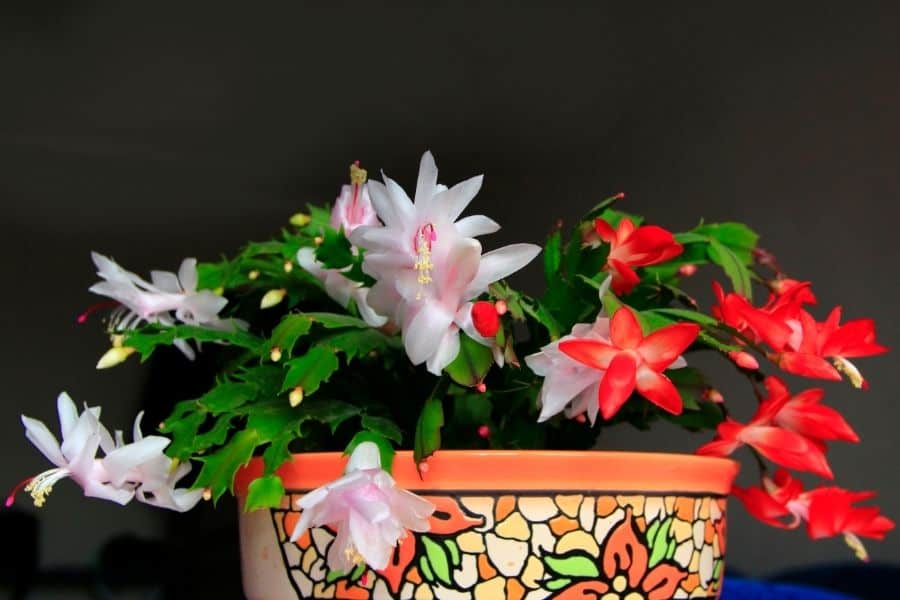
Contents
13 Schlumbergera Varieties and Hybrids
Let’s talk about the different Schlumbergera types of cacti! There are two main groups: the Truncata group and the Buckleyi group.
- The Truncata group comes from the Schlumbergera truncata plant. You might have heard them being called Thanksgiving cactus, claw cactus, zygocactus or crab cactus. These plants have stem segments with pointy teeth and their flowers are asymmetrical, held horizontally. They usually bloom earlier than the Buckleyi group.
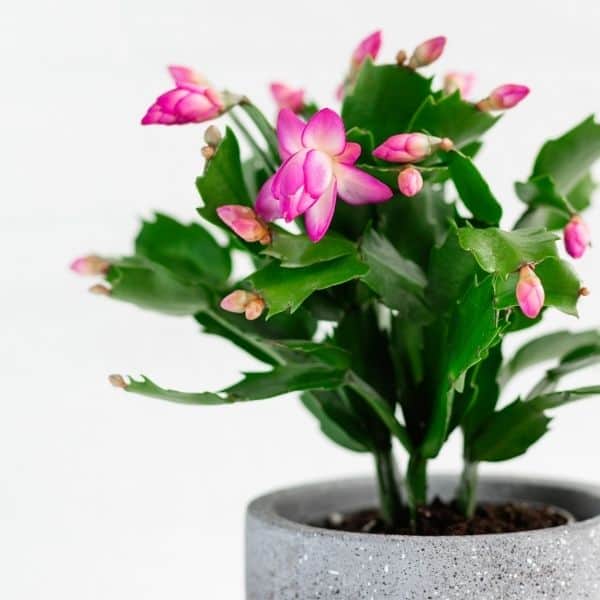
- On the other hand, the Buckleyi group gets its features from the Schlumbergera Russelliana plant. The stem segments have rounded and symmetrical teeth, and their flowers hang downwards with pink pollen. These are the ones we know as Christmas cacti because they bloom later than the Truncata group.
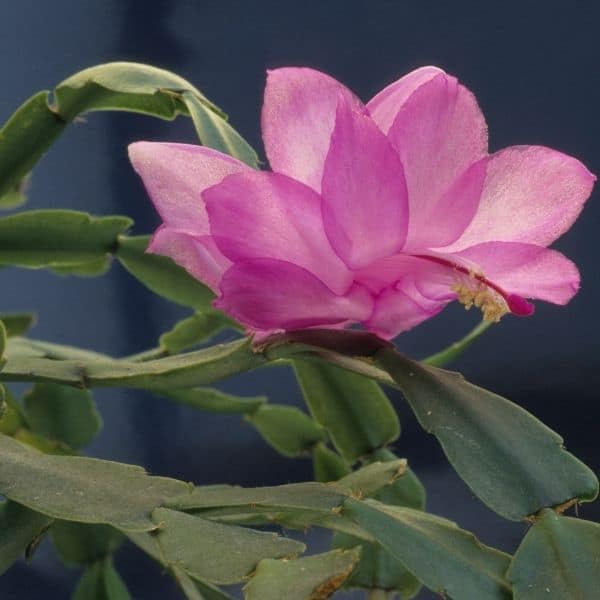
Now, let’s take a look at some different species and hybrids of the Schlumbergera cacti:
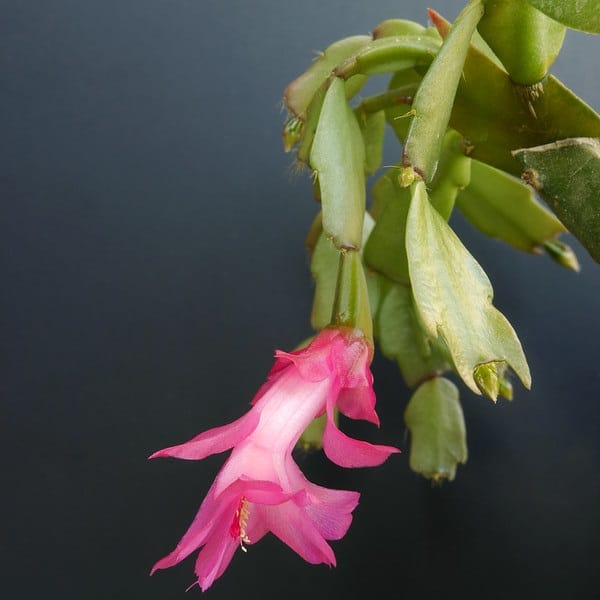
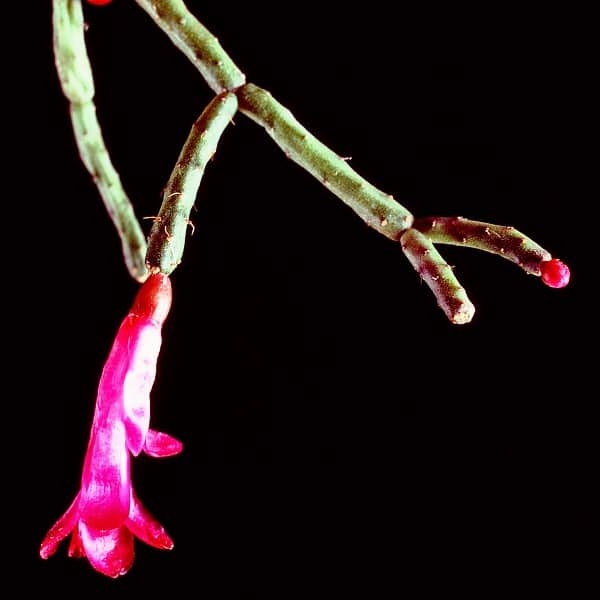
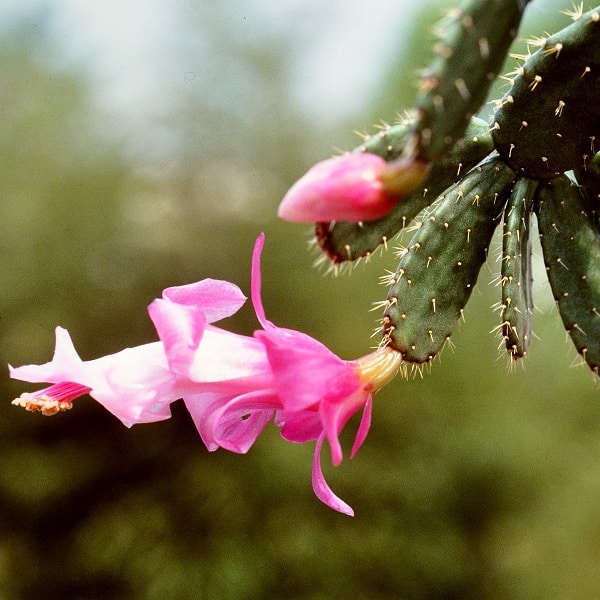
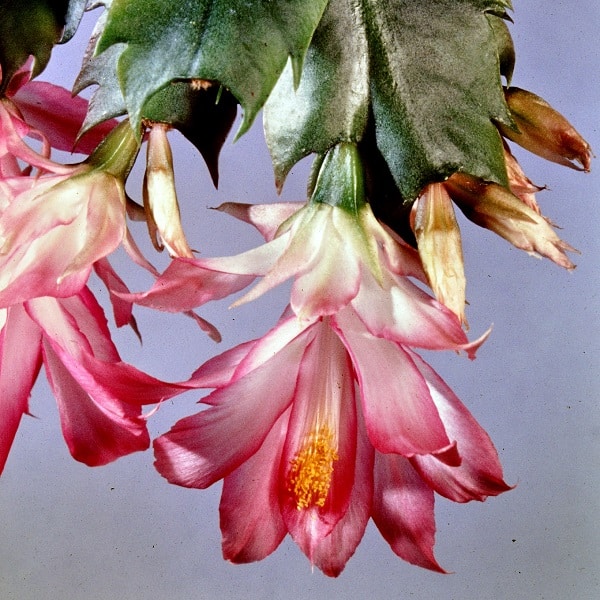

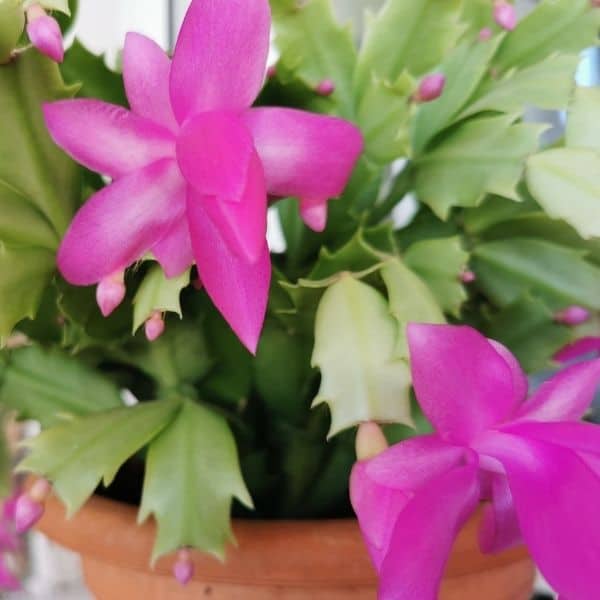
There are also three species that were originally part of the Hatiora group but were later moved to Schlumbergera:
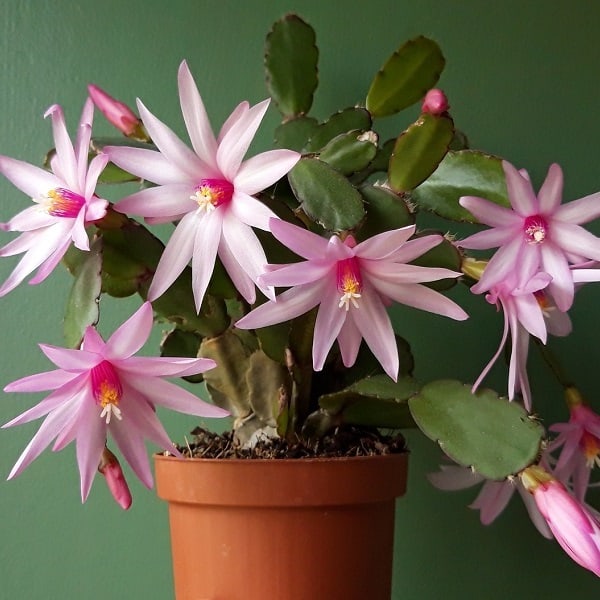
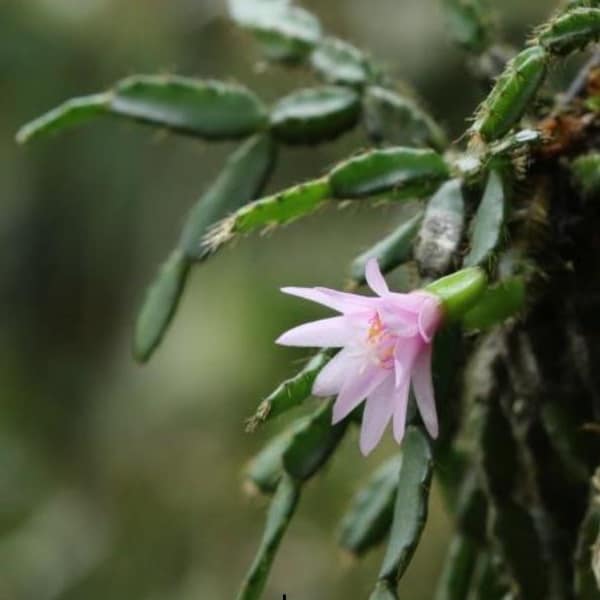
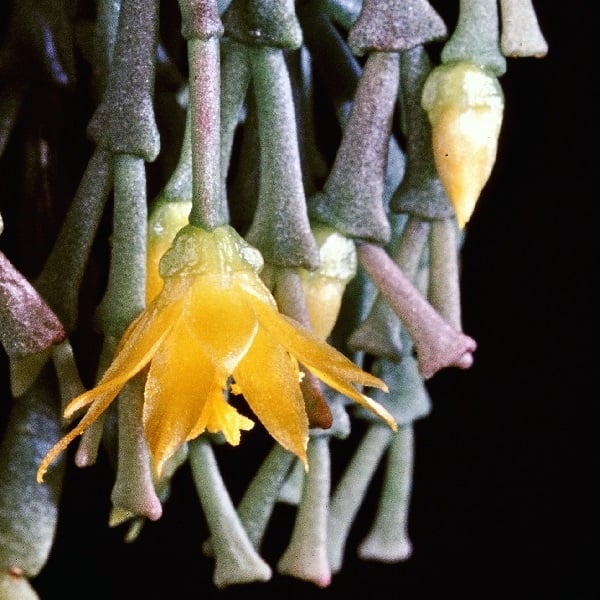
- Schlumbergera gaertneri: Also known as Whitsun cactus or Easter cactus, it’s an ornamental plant.
- Schlumbergera rosea: One of the parents of the Easter cactus.
- Schlumbergera lutea: Characterized by flat stems and yellow flowers.
The Schlumbergera, also known as the Christmas cactus, has different varieties, including the popular Zygocactus hybrids. Here are some hybrids of the Schlumbergera cactus:
- Schlumbergera x buckleyi: This is the true Christmas cactus.
- Schlumbergera x eprica
- Schlumbergera x exotica
- Schlumbergera x reginae
So, as you can see, there are many variations and types of Schlumbergera cacti to explore!
How to Care for Schlumbergera
Location
Let’s talk about how to take care of Schlumbergera, also known as the holiday cactus. This beautiful plant is originally from Brazil and it prefers a semi-shady spot with indirect sunlight. It’s important to keep it away from direct sunlight and in a well-lit, humid area.
Watering
When it comes to watering, Schlumbergera likes regular watering because it’s used to the rainforest environment. The soil should be moist, but not completely dry. Be careful though, as it doesn’t like being overwatered or underwatered. The amount of water it needs depends on the climate and time of year. In a hot and dry climate, water it every 2-3 days and keep it in the shade. Indoors, water it once a week if the environment is humid and cool. During fall and winter, reduce watering to encourage blooming.
Soil and Fertilizer
Schlumbergera needs well-draining soil to prevent root rot. You can use a mix of cacti and succulent soil. Fertilize it every 2-4 weeks from April to October using a water-soluble fertilizer with balanced amounts of nitrogen, phosphorus, and potassium. You can also use coffee grounds or compost but in small amounts. In late fall and early winter, stop fertilizing to encourage blooming.
Propagation
Propagating Schlumbergera is easier with cuttings. Take a Y-shaped cutting from the tip of a stem, let it dry for a few hours, and then plant it in well-draining soil. Keep the cuttings in a well-lit area but away from direct sunlight. Water sparingly until you see new leaf growth. It typically takes 3-12 weeks for the cuttings to develop roots.
Read also:
Propagating Christmas cactus in water
How to start a Christmas cactus
Planting

Schlumbergera does well in average home conditions. It prefers bright but indirect light and temperatures between 60°F and 70°F. During the dormant period (late fall and early winter), reduce fertilizer and water for around 6 weeks to encourage flowering. The plant needs humidity and long periods of darkness to bloom. The flowers come in various colors and can last for a few days, while the blooming period can last for weeks.
Hibernation
During hibernation, which is usually in the fall, Schlumbergera requires a cooler environment with less light (12-14 hours of darkness) and less humidity.
Pests
Pests like mealybugs, aphids, spider mites, brown scale insects, and fungus gnats can be a problem for Schlumbergera. You can remove them manually or use insecticidal soap. If the infestation is severe, you may need to discard the plant.
Is Schlumbergera an Indoor Plant?
Schlumbergera can be grown as an indoor ornamental plant, but in certain zones, it can also be grown outdoors. It’s a beautiful and low-maintenance houseplant that adds charm to any indoor setting.
